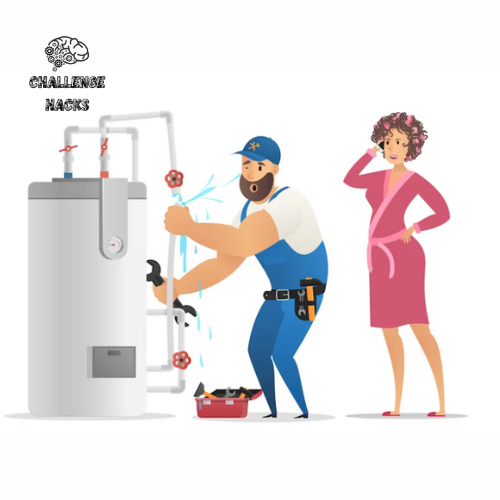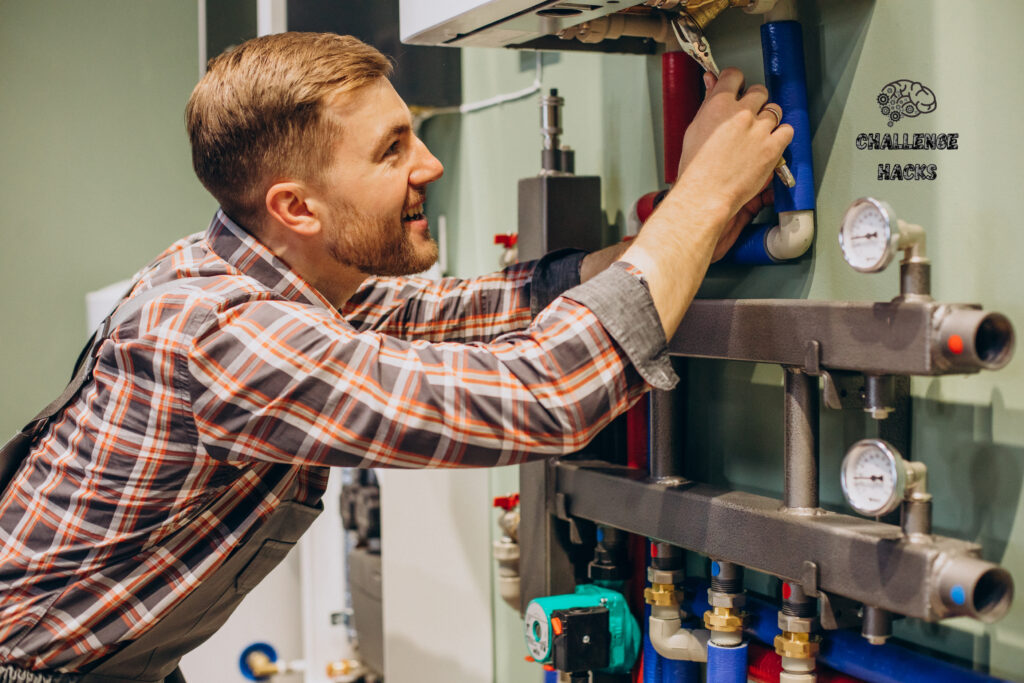
A water heater is a crucial appliance in every household, providing hot water for various daily activities. Over time, sediment buildup can occur within the tank, affecting its efficiency and potentially causing damage. Regular Rinse a Water Heater is essential to maintain the performance and longevity of your water heater. In this guide, we’ll delve into the frequency at which you should Rinse a Water Heater, the signs that indicate it’s time for maintenance and the pros and cons of regular Rinse a Water Heater.
Importance of Rinsing a Water Heater
Regularly rinsing a water heater serves as a preventive measure against sediment buildup, typically comprised of minerals and debris. This accumulation tends to settle at the tank’s bottom, giving rise to several potential issues that can impact the overall performance of your water heater:
- Reduced Efficiency:
- Sediment buildup acts as an insulator, impairing the efficiency of the heating element. This can result in longer heating times and decreased overall performance.
- Increased Energy Consumption:
- A water heater burdened by sediment requires more energy to heat the water adequately. This increased energy consumption translates to higher utility bills, affecting your overall energy efficiency.
- Shortened Lifespan:
- The presence of sediment in the tank can contribute to corrosion over time. This corrosion may lead to the deterioration of internal components, potentially shortening the lifespan of the water heater.
By understanding these potential issues, you can appreciate the importance of incorporating regular rinse a water heater maintenance routine. Not only does it enhance efficiency and extend the appliance’s lifespan, but it also contributes to energy savings over the long term. Taking a proactive approach to water heater care ensures a consistent and reliable hot water supply for your household.
Signs Your Water Heater Needs Rinsing
Recognizing the right time to flush your water heater is crucial, and it usually involves observing particular signs that indicate sediment accumulati0n within the tank:
- Reduced Hot Water Supply:
- One of the primary indicators is a noticeable reduction in the availability of hot water. Sediment accumulation can hinder the heating element’s performance, resulting in an inadequate hot water supply.
- Strange Noises:
- Unusual sounds, such as popping or rumbling, during the operation of your water heater may point to sediment-related issues. These noises are often a result of the water trying to bubble through sediment deposits.
- Slow Heating:
- If you observe that your water takes longer than usual to reach the desired temperature, sediment accumulation could be affecting the efficiency of the heating process.
By staying vigilant for these signs, you can proactively address sediment-related issues before they escalate. Regularly assessing the performance of your water heater ensures that you maintain an efficient and reliable hot water supply for your household.
How Often Should You Rinse a Water Heater?
The amount of hardness in the water, the size of the tank, and the patterns of use all influence how frequently you should rinse a water heater. Take into consideration the following as a basic guideline for figuring out the right schedule for your unique situation:
- Yearly Rinsing:
- In regions with hard water or households with heavier water consumption, it’s advisable to perform a thorough water heater rinsing annually. This proactive approach helps prevent significant sediment buildup, ensuring the continued efficiency of your water heating system.
- Biennial Rinsing:
- For areas with more moderate water conditions and average household usage, a biennial rinsing schedule may suffice. Conducting a comprehensive rinse every two years strikes a balance, addressing sediment accumulation without the need for frequent maintenance.
Tailoring your water heater rinsing frequency to these general recommendations helps maintain its efficiency, extend its lifespan, and ensure a consistent and reliable hot water supply for your home. Regular assessment and proactive measures align the maintenance schedule with your specific environmental and usage conditions.

Steps to Rinse a Water Heater
When it comes to maintaining your water heater, flushing is a simple yet crucial task that can substantially enhance its efficiency. follow these straightforward steps to hassle-free rinse a water heater:
- Turn Off the Heater:
- Before starting the rinsing process, ensure the water heater’s power source, whether electricity or gas, is switched off. Safety is paramount during maintenance activities.
- Drain the Tank:
- Connect a hose to the water heater’s drain valve and direct the other end to a suitable drainage area. This step allows sediment-laden water to efficiently exit the tank.
- Flush the Tank:
- Open the pressure relief valve to facilitate the smooth flow of water and effectively flush out any remaining sediment inside the tank. This step contributes to maintaining the optimal condition of your water heater.
- Close and Refill:
- Once the tank is drained, close the drain valve securely. To fill the tank again, turn on the water supply. After ensuring the tank is adequately filled, you can safely restore power to the water heater.
By incorporating these uncomplicated steps into your regular maintenance routine, you contribute to the longevity and efficiency of your water heater, ensuring a consistent and reliable hot water supply for your home.
Pros and Cons of Regular Water Heater Rinsing
Pros:
- Enhanced Efficiency: Regular rinsing maintains the heater’s efficiency, reducing energy consumption.
- Extended Lifespan: Preventing sediment buildup contributes to a longer lifespan for the water heater.
- Improved Performance: Consistent hot water supply and faster heating enhance overall performance.
Cons:
- Time-Consuming: Rinsing might take many hours to finish, making it a laborious operation.
- Danger of Damage: If safety precautions are not taken, improper rinsing could result in damage to the water heater.
Facts and Figures: Water Heater Maintenance
| Fact | Figure |
|---|---|
| Average lifespan of a water heater | 10-15 years |
| Percentage of home energy used by a heater | 18% |
| Annual energy cost savings with maintenance | Up to 15% |
| Average cost of professional maintenance | $150 – $200 per year |

Y0U MAY LIKE THIS Top 10 Water Heaters by Average Life
Can I rinse my water heater too often?
Rinsing your water heater too often is generally unnecessary and can be counterproductive. The frequency of rinse a water Heater depends on factors such as water hardness, tank size, and overall usage. Over-rinsing, without considering these factors, may lead to unnecessary wear on the heater’s components and a waste of resources. It’s advisable to follow the manufacturer’s guidelines or consider factors like water quality and household demand to determine an appropriate rinsing schedule. For most households, annual or biennial rinsing is sufficient to maintain optimal performance without the risk of overdoing it.
How does sediment build-up affect the water heater’s efficiency?
Sediment buildup in a water heater can significantly impact its efficiency in several ways:
Insulation Effect: Sediment, usually composed of minerals and debris, settles at the bottom of the tank. Over time, it forms a layer that acts as insulation, hindering the efficient transfer of heat from the heating element to the water.
Reduced Heating Efficiency: The insulating effect of sediment forces the heating element to work harder to heat the water, leading to reduced overall heating efficiency.
Increased Energy Consumption: A water heater struggling to overcome sediment buildup requires more energy to achieve the desired water temperature. Utility expenses may go up as a result of this increased energy use.
Shortened Lifespan: Sediment accumulation can contribute to corrosion inside the tank. Corrosion, combined with the strain on the heating element, may lead to a shortened lifespan of the water heater.
To maintain optimal efficiency and extend the life of your water heater, periodic rinsing to remove sediment is recommended.
Are there any risks associated with water heater rinsing?
While water heater rinsing is a routine maintenance task, there are potential risks associated with the process. It’s essential to be aware of these risks and take necessary precautions:
Scalding Hazard: Hot water can cause burns. Ensure the water heater is turned off, and use caution when draining hot water from the tank.
Pressure Buildup: Opening the pressure relief valve during flushing may release hot water and steam. Be cautious of potential pressure buildup.
Sediment Exposure: Sediment flushed from the tank may contain minerals and debris. Avoid direct contact and use protective gear if necessary.
Gas Water Heaters: If you have a gas water heater, turning it off before flushing is crucial to prevent gas-related risks.
Electrical Hazards: For electric water heaters, turning off the power source is essential to avoid electrical shocks.
To minimize these risks, follow manufacturer guidelines, use safety gear, and consider consulting a professional for water heater maintenance. If you’re unsure or uncomfortable with the process, seek assistance from a qualified technician.
Can I use vinegar for water heater maintenance?
Yes, vinegar can be used for water heater maintenance, specifically for addressing sediment buildup. Here’s a simple process:
Turn off the water heater: Ensure the power source (electricity or gas) is switched off.
Drain the tank: Connect a hose to the drain valve and let the sediment-laden water exit the tank.
Flush the tank: Open the pressure relief valve and allow water to flow, flushing out the remaining sediment.
Add vinegar: Pour a few gallons of white vinegar into the tank and let it sit for a few hours to dissolve mineral deposits.
Drain and flush again: After the vinegar treatment, drain the tank once more and flush it to remove any loosened sediment.
Refill and restart: Close the drain valve, turn on the water supply, and allow the tank to fill before restoring power.
Using vinegar is a cost-effective and environmentally friendly method to maintain your water heater, but it may not replace the need for professional maintenance in the long run. It’s crucial to follow safety precautions and manufacturer guidelines when performing any maintenance.
Is professional water heater maintenance necessary?
Although it is not required, professional water heater maintenance is strongly advised. Although some homeowners might prefer to do simple maintenance chores on their own, hiring a professional maintainer guarantees a comprehensive assessment and optimal operation of your water heater. Qualified specialists can detect possible problems, deal with silt accumulation, look for leaks, and make sure every part is operating as it should. Expert maintenance may lower the likelihood of unplanned malfunctions, increase energy efficiency, and prolong the life of your water heater. Maintaining the best possible condition for your water heater is a worthwhile investment.
Conclusion
In conclusion, regularly rinsing your water heater is a key maintenance task that contributes to its longevity and efficiency. By understanding the signs, frequency, and process of rinsing, you can optimize your water heater’s performance and save on energy costs. While the process may take some time, the long-term benefits far outweigh the effort. Keep your water heater in top condition, enjoy a consistent hot water supply, and extend its lifespan through proactive maintenance.
1 thought on “How Frequently Should You Rinse a Water Heater?”